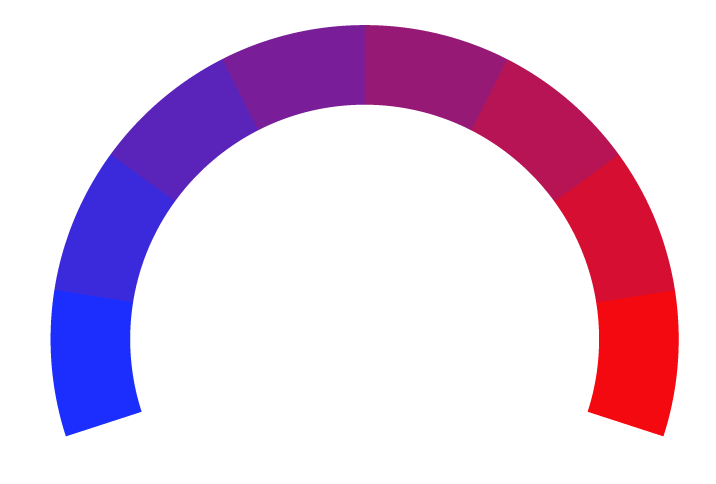 The Guardian Article Rating
The Guardian Article RatingThe rightwing US supreme court has climate change in its sights | Laurence H Tribe and Jeremy Lewin
- Bias Rating
-8% Center
- Reliability
N/AN/A
- Policy Leaning
6% Center
- Politician Portrayal
-20% Negative
Continue For Free
Create your free account to see the in-depth bias analytics and more.
Continue
Continue
By creating an account, you agree to our Terms and Privacy Policy, and subscribe to email updates. Already a member: Log inBias Score Analysis
The A.I. bias rating includes policy and politician portrayal leanings based on the author’s tone found in the article using machine learning. Bias scores are on a scale of -100% to 100% with higher negative scores being more liberal and higher positive scores being more conservative, and 0% being neutral.
Sentiments
N/A
- Liberal
- Conservative
| Sentence | Sentiment | Bias |
|---|---|---|
Unlock this feature by upgrading to the Pro plan. | ||
Reliability Score Analysis
Policy Leaning Analysis
Politician Portrayal Analysis
Bias Meter
Extremely
Liberal
Very
Liberal
Moderately
Liberal
Somewhat Liberal
Center
Somewhat Conservative
Moderately
Conservative
Very
Conservative
Extremely
Conservative
-100%
Liberal
100%
Conservative

Contributing sentiments towards policy:
64% :The role the court is poised to play in West Virginia v. EPA is more breathtaking still.61% : Thus, EPA could design, as its "best system", a scheme in which power companies reduced emissions by substituting cleaner energy like renewables and natural gas for dirtier coal - a tactic known as "generation shifting".
55% : Given intervening legal developments - and years of rapid change in the power sector that achieved CPP's emissions targets through free-market behavior - the agency had prudently asked for time to promulgate an entirely new rule.
54% : One section tasks EPA with identifying the "best system of emissions reduction" that's feasible to reduce Co2 from existing power plants, the largest category of stationary emitters.
53% : It hinged on a central notion: the CAA's "best system" language didn't contemplate only reductions individual plants could achieve by themselves, but authorized EPA to consider reductions the entire electrical grid might achieve by working as an integrated whole.
50% : Granting a petition by several states and coal companies, the supreme court on 28 February will address what appears to be a technical legal question: does the Environmental Protection Agency have authority to calculate Co2 emissions targets for power plants based on mitigation techniques involving steps "beyond the fence-line" of individual plants?
49% : In every sense, the dispute has become moot until EPA proposes a new rule imposing actual obligations on the states and companies.
47% : , several of the briefs urge the court to adopt extraordinarily broad understandings of when and how the "major questions" doctrine applies; to entirely overturn Chevron, one of the court's most deeply entrenched precedents; and to gut nearly the entire CAA by reviving the long-dormant "non-delegation doctrine" - last employed by the ultra-conservative Lochner-era court to frustrate the New Deal in the 1930s.
44% : Yet, as its recent onrush of breaks with precedent, procedure and prudence to achieve the ultra-conservative majority's policy preferences on abortion, public health and voting rights demonstrate, today's court flouts all institutional bounds.
44% : Some insisted EPA could not so broadly construe the statutory word "system", a claim difficult to square with the foundational doctrine of "Chevron deference," under which courts defer to any "reasonable" agency interpretation of an "ambiguous" term like "system".
41% : In 1970, Congress passed the Clean Air Act, empowering the new EPA to regulate dangerous pollutants like carbon dioxide to make our air safer; indeed, after the supreme court's 2007 decision in Massachusetts v. EPA, the act requires EPA to seek lower Co2 emissions.
39% : The senior author of this column challenged EPA's plan on the narrower basis that EPA had rested its legislative authority on nonexistent power to choose which of two versions of the CAA Congress had enacted.
35% :Unsatisfied with that temporary victory, the states and coal companies filed several petitions asking the supreme court to hear the case and permanently lock in Trump's defenestration of EPA's authority - lest they be injured by what Biden's EPA might someday propose if the court doesn't proactively clip the agency's wings.
*Our bias meter rating uses data science including sentiment analysis, machine learning and our proprietary algorithm for determining biases in news articles. Bias scores are on a scale of -100% to 100% with higher negative scores being more liberal and higher positive scores being more conservative, and 0% being neutral. The rating is an independent analysis and is not affiliated nor sponsored by the news source or any other organization.





















